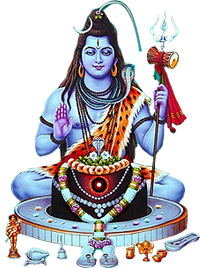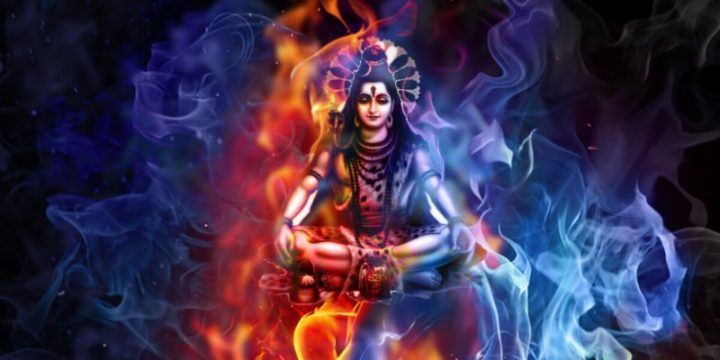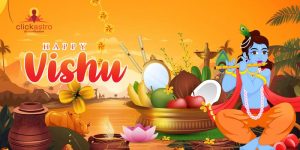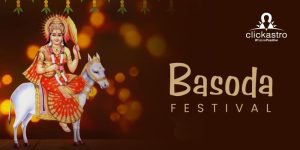Celebrating Maha Shivratri 2025 & Honouring Lord Shiva
Maha Shivratri is the biggest festival for all devotees of Lord Shiva, and the festival celebrates ‘the great night of Shiva’. An annual Hindu festival dedicated to Lord Shiva, Maha Shivratri sees Hindus all over the world observe this festival with great devotion and fervor. On this auspicious day, people honor Lord Shiva by visiting Shiva temples, offering special prayers and poojas, continuously chanting ‘Om Namah Shivaya’, and staying awake at night. While these are the standard practices followed on the occasion of Maha Shivratri, devotees also take up fasts and begin new endeavors on this auspicious day. The day is celebrated across countries like India, Nepal, and Mauritius, with government holidays being declared. Maha Shivratri is observed on the fourteenth night of the dark fortnight in the Hindu lunar month Falgun or Magha. It usually falls in February or March, in the Gregorian calendar and, in 2025, it falls on February 26th, Wednesday.Celebrating Maha Shivratri 2025
Every year, Maha Shivratri is celebrated on the Krishna paksha Chaturdashi (14th day of the waning phase) of the Hindu month, Falgun or Magha. In the North Indian Panchang (Purnimant Panchang), it is the month Falgun and, in the South Indian Panchang (Amavasyant Panchang), it is the month of Magha. In both of these systems, Maha Shivratri occurs on the same day and, hence, the date in the Gregorian Calendar remains the same for the entire India. This year, the festival will be celebrated with great pomp and joy, by people across the country and devotees around the world.
Get to know about Masik Shivratri
2025 Maha Shivratri Puja Timings:
On February 26, the Chaturdashi tithi for Maha Shivratri will begin at 11:08 AM. The tithi will end at 8:55 AM on February 27.
Shubh Muhurat for Maha Shivratri 2025
Most devotees perform the Maha Shivratri Shiva Puja during Nishtita Kaal or midnight. Further, devotees will also celebrate the occasion and perform Pooja during all four prayers of the auspicious day.
- The First Prahar time will start at 6:24 PM and end at 9:32 PM (February 26)
- The second Prahar timing will start at 9:32 PM (February 26) and end at 12:39 AM (February 27)
- The third Prahar timing will start at 12:39 AM (February 27) and end at 3:46 AM (February 27)
- The Fourth Prahar will begin at 3:46 AM and end at 6:53 AM (February 27)
There are two major occasions here – while the 14th day of every lunar month (the day before the new moon) is considered Shivaratri, the one falling on the Krishna paksha Chaturdasi (the 14th day of the waning phase) of Falgun/Magha month has the highest spiritual significance and is observed as Maha Shivratri. Devotees believe that, on this night, the northern hemisphere of the Earth positions in a way that causes a natural upsurge of energy. This energy can be optimally utilized and benefitted from, as long as devotees observe all the religious rites truthfully and piously.
If you wish to observe vrat and stay up for a vigil at night, the following rules are to be followed, as the holy scriptures state.

If the entire Nishithkaal (eighth Muhurat of the night) comes under Chaturdashi Tithi on the very first day, Maha Shivratri is celebrated on the same day.
If Chaturdashi Tithi touches the first part of the Nishithkaal of the second day but the entire Nishith Kaal of the first day comes under Chaturdashi Tithi, then Mahashivratri is on the first day.
Apart from the cases mentioned above, the vrat has to be observed on the second day.
Maha Shivratri Puja & Vrat 2025
On this momentous occasion of the Maha Shivaratri, observances include poojas, abhisheka, fasting, and staying awake at night while immersed in prayers and meditations. As per Vedic astrology, the devotees observe fast on this day and stay awake all night, meditating or chanting prayers inside the temples. Some devotees observe strict fasting, and they avoid even the consumption of water. This helps them focus better and be more attuned to the auspicious occasion and the energy flowing through the universe. Since the fasting directions are not austere, some people choose to have food once, while others follow a fruit and milk diet based on their abilities. Devotees visiting Shiva temples perform prayers, and special pujas and bring offerings to appease the deity. Those who wish to stay awake may visit the temples and spend their night chanting prayers or the ‘Om Namah Shivaya’ mantra. Some devotees chant the Maha Mrityunjaya Mantra too, during the celebration.
People also perform the important ritual of the Abhisheka on Shivalinga, which is performed by using precious elements such as milk, honey, sugar, butter, black sesame seeds, Ganga Jal, etc. After the Abhisheka or bathing of Shiva Linga, sandalwood paste, and rice are applied to the linga, in addition to offering fresh fruits and flowers. In the new world, many of us do not know the significance of these rituals, but a look at the holy scriptures will tell us all the details. Indeed, according to Shiva Purana, all these observations have specific meanings, as mentioned below.
Bathing Shivalinga with water, milk, honey, and betel leaves marks the purification of the soul.
- Applying vermillion or kumkum symbolizes virtue.
- Offering fruits indicates longevity and gratification of desires.
- The burning of incense symbolizes wealth.
- The lighting of lamps indicates the attainment of knowledge.
- Betel leaves signify satisfaction with worldly pleasures.
Legends Around Maha Shivratri
Lord Shiva is one of the most powerful deities in Hindu mythology. He is considered a savior and the harbinger of justice. Accordingly, the Maha Shivratri day is marked by some legends. One such legend is that Maha Shivratri is the night when Lord Shiva performed the Tandava Nritya – the cosmic dance of primordial creation, destruction, and preservation. Another one is that it is the occasion of Shiva-Shakthi convergence or the marriage of Lord Shiva with Goddess Parvati. There is also a legend, as per the Hindu scholars, that it is the occasion in which Shiva saved the world by consuming the poisonous negativity and keeping it contained in his throat, which is the reason why his throat is blue.
For some believers, it is the occasion in which Shiva manifested his great effulgent form – Jotirmaya or Jyotirlinga to Lord Vishnu and Lord Brahma. Indeed, while several legends espouse the importance of this day, there is one thing that we can state for certain – Maha Shivratri is a hugely significant and auspicious day for all Hindus across the world and is celebrated with great fervor and pomp.
Shivaratri Vrat – Astrological Boons
Shivratri is celebrated on the Krishnapaksha Chaturdashi or the fourteenth day of dark fortnights. It is the one day when you can fast and have your sins atoned. Shiva is regarded as the lord of Chaturdashi Tithi. In astrology classics, this day is essential. As per astrology, the Moon is the significator of the mind, and it gets weaker on this day. Since Lord Shiva has established the Moon over his forehead, worshipping him empowers the Moon of the worshipper (in the birth chart). It gives the worshipper mental strength, willpower, courage, and toughness, making it an exceptional day for devotees.
Know about Pradosh Vrat 2025
Why is Maha Shivratri So Significant?
In the Hindu religion, most of the festivals are either the commemoration of some victory or the celebration of agricultural events, such as sowing and harvesting. But Maha Shivaratri is a festival with some differences. Its importance varies with perceptions. The significances of Maha Shivratri include the following:
On Maha Shivratri, those who strictly observe fasting and other penances are believed to achieve Moksha or liberation. On this occasion, the religious practices, including Yoga and meditation, work more effectively, and the benefits of mantras, such as Maha Mrityunjaya Mantra, increase. Material pleasures and temptations are forces that bother humans a lot. Maha Shivratri puja, vrat & fast are so powerful that they help a person attain control over worldly pleasures and temptations. By worshipping Shiva and observing the fast for the entire Shivratri night, one can have control over negative thoughts like anger, lust, greed, etc.
On Maha Shivaratri, the universe pushes us towards the spiritual peak; the planetary positions evoke the spiritual energies that help us rise to that level. The tradition of observing the festival night and staying awake is to allow this flow of energy to pass through our spine.
Celebrating the Essential Nature of Darkness
The 14th night of the waning phase in each month is celebrated as Shivaratri, and Maha Shivaratri is the one with the highest significance. These Shivratri nights are considered the darkest nights. So, celebrating these nights is like commemorating the darkness and emptiness. The general perception is that darkness symbolizes ignorance or evil while light symbolizes knowledge or goodness. But, the word ‘Shiva’ means ‘that which is not. ‘That which is’ is the creation – those with a form. That which is not is ‘Shiva’. When we observe space, we see stars and galaxies, which are just a few spots in the vast darkness or emptiness. This enormous and unbounded emptiness is what is referred to as ‘Shiva’, and we celebrate this phenomenon on Maha Shivratri.
Across cultures, God is that which is all-pervading, and the only thing that can be everywhere is nothingness or emptiness. Light is not eternal; it has a beginning and an end. But darkness needs no source; it is all-pervading and all-enveloping. It can be everywhere with no beginning and no end. So, when we describe God as omnipresent or all-pervading, we are referring to the darkness or emptiness which is present everywhere and supported by nothing. It is in the lap of this vast emptiness that all creation has happened. It is this lap of emptiness that we refer to as ‘Shiva – that which is not’ and thus Maha Shivratri is the celebration of nature and its elements.
For those of us who are ordinary, darkness is evil. For the spiritual seekers whose objective is dissolution, darkness is divine. The Yogis consider Shiva as the Aadi Guru from whom the divine knowledge originated. They consider Maha Shivratri as the night of stillness on which Shiva became one with Mount Kailash. Shiva is regarded as the Mahadev – the supreme power, the destroyer, and the most compassionate. The universe itself is a vast emptiness that holds and keeps the galaxies apart. This unbounded emptiness is what is referred to as ‘Shiva –that which is not’. Even modern science proves that ‘everything comes from nothing and goes back to nothing’. Everything we see and experience as matter is a different manifestation of one energy. It is in this context that Shiva, the vast emptiness or nothingness, is referred to as the great lord, or Mahadeva. Maha Shivaratri gives a spiritual seeker the chance to understand his limitedness and to experience this oneness/emptiness – the omnipresent source of creation.








Observations during Shivarathiri explained very well. Thanks for this article
Nice information– we can also – The name Ugadi is derived from the Sanskrit word name Yuga “age” and a “starting” that means the starting of the new world.
https://www.jaicoupons.com/blog/ugadi-2019/
Thanks for sharing the information
I must thank you for the efforts you’ve put in writing this site. I’m hoping to view the same high-grade content from you later on as well. In fact, your creative writing abilities has encouraged me to get my own, personal site now 😉